Product pictures
| Amount Per 2 pieces | |||
| Calories | 250 Kcal (1047 kJ) | ||
| Calories from fat | 144 Kcal | ||
| % Daily Value* | |||
| Total Fat | 16g | 25% | |
|---|---|---|---|
| Saturated Fat | 2g | 10% | |
| Cholesterol | 100mg | 33% | |
| Sodium | 610mg | 25% | |
| Total Carbs | 8g | 3% | |
| Sugars | 3g | 12% | |
| Dietary Fiber | 1g | 4% | |
| Protein | 19g | 38% | |
| Vitamin C | 4.5mg | 8% | |
| Vitamin A | 0.1mg | 2% | |
| Iron | 1.5mg | 8% | |
| Calcium | 100mg | 10% | |
* Percent Daily Values are based on a 2000 calorie diet. Your daily values may be higher or lower depending on your calorie needs.
Find out how many calories should you eat.
Ingredients And Nutrition Overview
Best
choice Good
choice Poor
choice Avoid
it!
choice Good
choice Poor
choice Avoid
it!
-
WeightWatchers Points: 6.1, PointsPlus: 7, SmartPoints: 7
WeightWatchers Points are estimated by carbohydrates, fats, protein and fiber in product. They are not an affirmation of better quality or nutritional value of the product or its manufacturer. Only way to count for dieters. Less points are better.
Read more at Weight watchers diet review -
Very high cholesterol
Today cholesterol is no longer a villain. The 2010's USDA guidelines told us to limit cholesterol from foods
Now experts say cholesterol is "not a nutrient of concern" because cholesterol from foods doesn't cause higher
blood cholesterol levels.
Nevertheless try to consume no more than 300 milligrams daily.
This product has 90 mg of cholesterol or more.
How to lower the cholesterol intake? Here are some advices
- Try to limit your cheese, dairy and meat intake to one item per meal.
- Avoid meals with multiple sources of cholesterol (chicken with cheese, junk food)
- Try to indclude in your diet low- or nonfat dairy, seafood, legumes and nuts.
- Choose water instead of milk for your coffee.
-
Salty! Has over 25% of the daily sodium max
The average American consumes 5,000 mg of sodium daily — twice the recommended amount amount of 2400mg for healthy adults, this is 1 teaspoon of salt.
For medical reasons many people should not exceed 1500mg of sodium.
Surprisingly, you're responsible for only 15% of the sodium in your diet the bigger part - 75% of the sodium that you consume each day comes from processed foods, not home cooking or the salt shaker.
Excess sodium intake increases the risk of high blood pressure, hypernatremia, hypertension, cardiovascular disease and other heart problems.
Are these reasons enough to cut the sodium intake? No doubt! -
Convert Salt tsps to Sodium mg easily
Salt (NaCl) is not excactly sodium (Na).
It is not right to use these terms as synonyms.
The FDA recommended limit of sodium is 2,300 mg per day (or even less - about 1500 mg while one is on low sodium diets).
This is much less than the weight of salt.
(5,750 mg per day or 3,750 mg for low sodium diet) and not so convenient to calculate.
Know how much sodium is in your salt - without a calculator:
1/4 tsp salt = 600 mg sodium
1/2 tsp salt = 1200 mg sodium
3/4 tsp salt = 1800 mg sodium
1 tsp salt = 2300 mg sodium -
Great! Contains less than 1.5 tsp of sugar.
Great! Contains less than 1.5 tsp of sugar per serving!
-
Learn about veggies and iron
Veggies such as broccoli, bok choy, spinach, parsley and most leafy greens are naturally high in iron.
However, compared to other high-iron foods, like red meat, fish and poultry, the iron in plant foods is not absorbed as easily by the body. What can you do to increase the absorption of iron from these plant foods?
- Vitamin C increases the absorption - so try having a fresh tomato, lemon juice, or an orange together with your high iron food
- Avoid drinking too much coffee - caffeine can decrease the absorption of iron
- In addition to caffeine, the tannins found in tea can also reduce iron absorption
- If you are a vegetarian, try having iron-fortified breakfast cereals, legumes, and eggs
-
Has EDTA, on FDA's toxicity watchlist
Ethylenediaminetetraacetic acid (EDTA) is a chemical added to certain foods and beverages to keep their color and flavor.
EDTA is known as a persistent organic pollutant. It resists degradation from biological, chemical, and photolytic processes.
It may irritate the skin or cause skin rash and even asthma.
It is is generally recognized as safe by FDA, but is on it's list of food additives to be studied for toxicity. -
Contains phosphoric acid
Phosphoric acid is used as an additive to acidify foods and beverages such as various colas and jams.
It provides them a tangy or sour taste and then, to mask and balance the acidity they add a huge amounts of sweeteners.
Remember! It’s a corrosive acid and can form toxic fumes when it comes into contact with alcohols, ketones and other organic compounds.
Phosphoric acid has been linked to lower bone density, dental erosion, risk of developing kidney disease.
BTW: The clear sodas that contained citric acid didn’t have the same risk.
Sources:
American Journal of Clinical Nutrition: Colas, But Not Other Carbonated Beverages, Are Associated With Low Bone Mineral Density in Older Women: The Framingham Osteoporosis Study
American Journal of Clinical Nutrition: Carbonated Beverages and Urinary Calcium Excretion
Epidemiology: Carbonated Beverages and Chronic Kidney Disease
General Dentistry: Commercial Soft Drinks: pH and in Vitro Dissolution Of Enamel
Archives of Pediatric and Adolescent Medicine: Teenaged Girls, Carbonated Beverage Consumption, and Bone Fractures
Phosphoric acid has been linked to lower bone density in some epidemiological studies, including a discussion in the American Journal of Clinical Nutrition.
Allergens
Shellfish Allergy, Soy Allergy, Eggs Allergy, Lactose Allergy, Milk Allergy, Corn Allergy, Fish Allergy, Wheat Allergy, Gluten Allergy, Sulfites Allergy
Crab cakes Ingredients
Crabmeat (Contains Sodium and Pyrophosphate to Retain Color), Salad Dressing [Water, Soybean Oil, Liquid Egg Yolk, Garlic Juice, Vinegar, Salt, Parmesan Cheese (Milk, Casein, Bacterial Culture, Salt, Calcium Chloride, Rennet, Lipase, Cellulose, Sorbic Acid), Modified Cornstarch, Sugar, Spices, Xanthan Gum, Anchovies, Glucono Delta-Lactone, Sorbic Acid, Lactic Acid, Phosphoric Acid, Flavor, Propylene Glycol Alginate, Sodium Benzoate, Color, Soy Lecithin, Soy Flour, Disodium Guanylate, Disodium Inosinate, Calcium Disodium EDTA], Cracker Meal (Wheat Flour, Durum Flour, Water, Leavening, Yeast), Canola Oil, Onion, Liquid Whole Eggs, Leeks, Dijon Mustard (Vinegar [Contains Sulfites], Mustard Seed, Salt, White Wine, Citric Acid, Tartaric Acid, Spices), Modified Cornstarch, Salt, Sugar, Parsley, Cellulose Gum, Natural Onion Flavor, Caramel Color.
You Might Also Like
% RDI of Main Nutrition Facts
13%
of RDI* (250 calories) 0 g
-
Cal: 12.5 %
-
Fat: 24.6 %
-
Carb: 2.7 %
-
Prot: 38 %
-
0%25%75%RDI norm*
Calories Breakdown
- Carbs (12.7%)
- Fat (57.1%)
- Protein (30.2%)
Get Your Recipe of Health!
Follow RecipeOfHealth on Facebook!

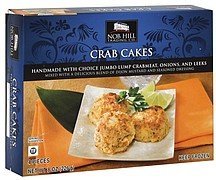
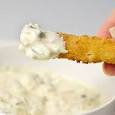
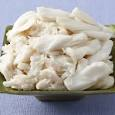

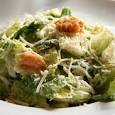
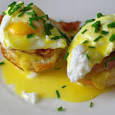
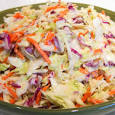
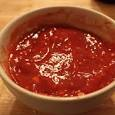
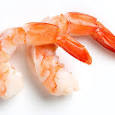
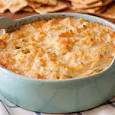
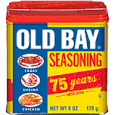
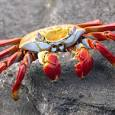
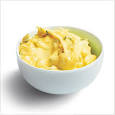
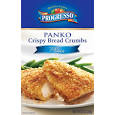
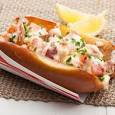
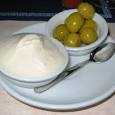
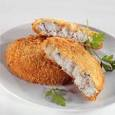
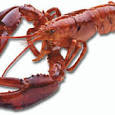









Add your comment